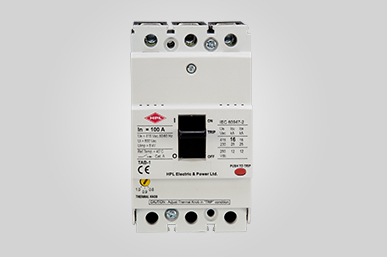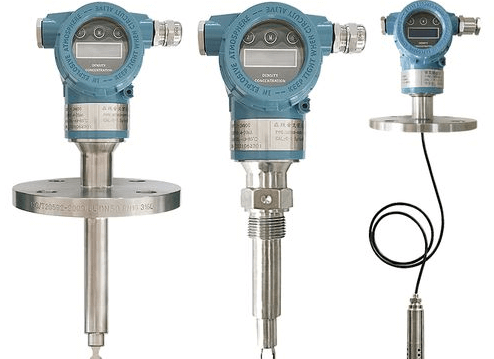LCD MCCB: Enhanced Monitoring with Integrated Display Features
In modern electrical systems, the need for real-time monitoring and precise control has led to the development of more sophisticated circuit breakers. Among these, the LCD Molded Case Circuit Breaker (MCCB) stands out as an advanced solution, combining the reliability of traditional MCCBs with the added benefit of integrated display features. This article explores the features, benefits, and applications of the LCD MCCB, highlighting its role in enhancing system monitoring and protection.
What is an LCD MCCB?
An LCD MCCB is a type of molded case circuit breaker that incorporates an integrated Liquid Crystal Display (LCD) screen. This display provides real-time information about the status of the electrical system, including trip data, current levels, voltage, and fault history. By integrating an LCD into the circuit breaker, users can gain valuable insights into system performance, making it easier to monitor and manage electrical systems.
The LCD screen typically works in conjunction with the thermal-magnetic or electronic protection mechanisms, allowing for better visibility and control over the breaker’s operations. The breaker’s display provides detailed information about current, fault conditions, and historical data, offering both immediate alerts and long-term performance analysis.
Key Features of LCD MCCBs
1. Real-Time Monitoring
The most significant advantage of an LCD MCCB is its ability to provide real-time monitoring of the electrical system. The LCD screen displays important parameters such as:
- Current: Displays the ongoing current level flowing through the circuit.
- Voltage: Shows the voltage levels of the electrical system.
- Frequency: Monitors the frequency of the electrical supply, ensuring it remains within safe limits.
- Power Consumption: In some cases, the LCD display also provides information on power consumption, allowing users to track energy usage efficiently.
These features make it easier for operators to monitor and adjust settings in real-time, improving the overall efficiency of the electrical system.
2. Fault Indication and Trip Data
LCD MCCBs offer detailed fault indication, showing the type of fault and the conditions under which the breaker tripped. This data can include:
- Overload: The breaker trips when the current exceeds the preset overload value.
- Short-Circuit: The breaker indicates when a short-circuit event has occurred.
- Ground Fault: Some LCD MCCBs can detect and display ground fault conditions.
- Phase Imbalance: In three-phase systems, the display can show if there is an imbalance in the phases.
By providing fault data and trip history, LCD MCCBs help operators quickly identify the cause of a system interruption and take corrective actions. This reduces downtime and improves the reliability of the electrical network.
3. User-Friendly Interface
The integrated LCD screen makes it easier for operators to interact with the breaker. The display typically includes intuitive controls that allow users to scroll through settings, view fault history, and adjust parameters without needing to remove the breaker or rely on external monitoring equipment. This ease of access simplifies troubleshooting and system maintenance.
4. Customizable Settings
Many LCD MCCBs feature customizable settings that allow users to adjust trip settings, such as overload and short-circuit thresholds. These breakers often come with multiple protection settings that can be tailored to the needs of specific applications. Some models also allow for remote adjustments through the LCD display, enabling more flexibility and control.
5. Communication and Remote Monitoring
In advanced versions of the LCD MCCB, communication ports may be available for remote monitoring and control. These MCCBs can be integrated into a larger supervisory control and data acquisition (SCADA) system or a building management system (BMS), providing operators with real-time data from anywhere within the facility or even remotely.
Communication features can include:
- Modbus: For integration with industrial automation systems.
- Ethernet/IP or BACnet: For communication with other smart systems in large-scale installations.
This connectivity allows for enhanced monitoring, data logging, and remote troubleshooting.
6. Energy and Power Logging
Some LCD MCCBs come with integrated energy and power logging capabilities, helping to track energy consumption over time. This feature is beneficial for facilities that want to optimize energy use and reduce costs. The breaker can store and display historical data about energy consumption and faults, which can be analyzed to improve system efficiency.
Benefits of LCD MCCBs
1. Enhanced System Visibility
By providing real-time monitoring, fault indication, and performance data, LCD MCCBs enhance the visibility of electrical systems. This increased awareness allows operators to quickly detect potential issues, address problems before they cause system downtime, and make data-driven decisions to optimize performance.
2. Improved Fault Diagnostics
The ability to display detailed fault information on the LCD screen improves diagnostic capabilities. Operators can view not only the type of fault but also the conditions leading up to it. This data is valuable for identifying recurring issues and improving system reliability through preventive maintenance.
3. Reduced Downtime
Real-time monitoring and fault diagnostics contribute to faster response times in case of faults. The detailed data provided by the LCD MCCB helps operators quickly identify the problem, reducing downtime and preventing system failures from escalating into major disruptions.
4. Cost Savings
By providing insights into power consumption and fault occurrences, LCD MCCBs can help reduce energy costs and maintenance expenses. Early detection of inefficiencies and faults can minimize the need for costly repairs and optimize energy usage, leading to long-term savings.
5. Increased Flexibility
LCD MCCBs offer enhanced flexibility with customizable settings and communication features. The ability to adjust protection settings and monitor data remotely allows for better management of electrical systems in a variety of applications, including industrial, commercial, and residential environments.
6. User-Friendly Interface
The LCD display simplifies the interaction with the breaker, allowing operators to quickly view critical data, adjust settings, and reset the breaker. This user-friendly interface eliminates the need for complex diagnostic tools or external monitoring devices, making maintenance and troubleshooting easier and more efficient.
Applications of LCD MCCBs
1. Industrial and Commercial Installations
In large-scale industrial and commercial facilities, LCD MCCBs are used to protect machinery, equipment, and power distribution networks. The enhanced monitoring features help prevent costly downtime by providing real-time data and fault information.
2. Data Centers
Data centers rely on continuous, uninterrupted power to maintain their operations. LCD MCCBs can be used to monitor and protect critical power distribution systems, providing fault diagnostics and performance data to ensure reliability and minimize the risk of service interruptions.
3. Renewable Energy Systems
In renewable energy systems, such as solar or wind farms, LCD MCCBs can monitor the performance of inverters, transformers, and other critical components. The real-time data helps optimize energy production and ensures the protection of sensitive equipment.
4. HVAC Systems
LCD MCCBs are commonly used to protect HVAC (heating, ventilation, and air conditioning) systems. The breakers monitor current, voltage, and power consumption, allowing operators to optimize system performance and detect faults before they lead to equipment failure.
5. Marine and Offshore Platforms
On marine and offshore platforms, LCD MCCBs offer robust protection for power systems in harsh environments. The breakers provide visibility into the system’s performance, helping to prevent power failures in critical applications like drilling operations and electrical grids.
Conclusion
LCD MCCBs represent a significant advancement in circuit protection technology, offering enhanced monitoring capabilities and improved fault diagnostics. With their integrated display features, these circuit breakers provide real-time data, customizable settings, and user-friendly interfaces, making them ideal for applications where precise control and system visibility are critical. Whether used in industrial settings, renewable energy systems, or commercial buildings, LCD MCCBs help ensure the reliability, safety, and efficiency of electrical systems, reducing downtime and optimizing performance.






